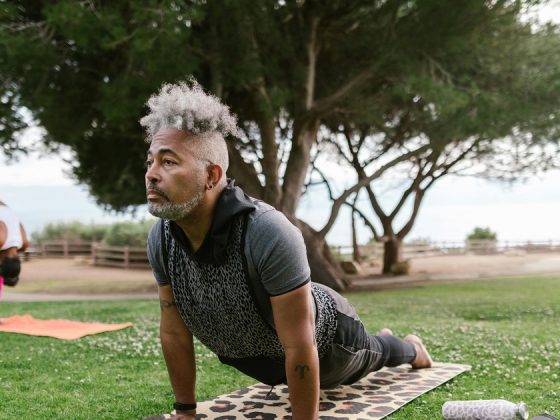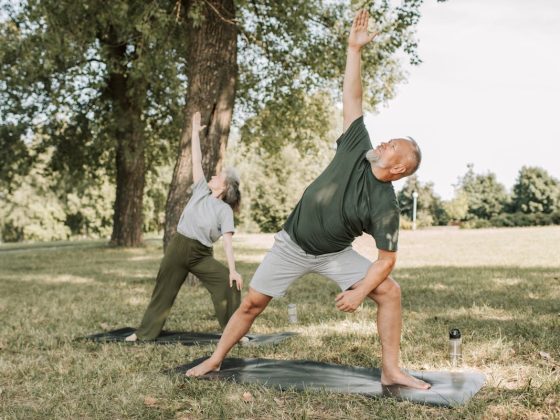Choosing the right sport can be a transformative experience that affects your overall well-being, fitness, and even social life. While the decision may seem straightforward, there are many factors to consider to ensure you select a sport that aligns with your goals, interests, and abilities. In this extensive guide, we’ll break down the steps on how to choose your sport, exploring critical factors such as your physical condition, personal interests, resources, and goals.
Whether you are a seasoned athlete looking to try something new or someone just beginning to explore the world of sports, understanding the process of choosing a sport will help you make a decision that suits your lifestyle and keeps you motivated in the long term.
The Importance of Choosing the Right Sport
Before diving into the details, it’s essential to understand why choosing the right sport is such a crucial decision. The sport you choose will likely dictate your fitness routine, social interactions, and even your mental health. Here are a few reasons why it’s vital to get this decision right:
1. Physical Fitness and Health
Every sport offers unique physical benefits. Some sports are cardio-intensive and improve heart health, while others focus on building strength, flexibility, or agility. Selecting the right sport will help you work on specific fitness goals, whether you want to build muscle, lose weight, improve endurance, or increase overall fitness.
2. Mental Health and Emotional Well-being
Engaging in sports is known to reduce stress, improve mood, and enhance mental clarity. Participating in the right sport can provide a much-needed outlet for mental relaxation and emotional well-being. Activities like running, swimming, or yoga, for instance, are known for their meditative qualities, helping to reduce anxiety and depression.
3. Social Interaction and Community
Many sports require teamwork, while others may encourage solo performance but in a group setting. Finding a sport that aligns with your social preferences can enhance your life beyond the physical aspects. If you enjoy collaboration and socializing, team sports like soccer or basketball can build friendships and a sense of community.
4. Personal Development and Discipline
Sports teach valuable life skills such as discipline, time management, teamwork, and perseverance. Engaging in regular practice, whether for personal improvement or team success, can foster personal growth and development. Learning how to choose your sport also means aligning it with the kind of personal challenges and improvements you want to work on.
5. Long-term Engagement
Staying motivated in a sport requires passion and interest. If you choose a sport that truly excites you, it will be much easier to stay committed, even when faced with challenges or busy schedules. Understanding what excites you and keeps you engaged is critical in selecting the right activity.
Step-by-Step Guide on How to Choose Your Sport
Step 1: Self-Reflection – Assess Your Interests and Preferences
The first and most important step is reflecting on your interests. Ask yourself what kind of activities you naturally gravitate towards. Do you enjoy fast-paced, high-intensity games? Or do you prefer endurance activities like running or swimming? Maybe you enjoy mind-body activities such as yoga or martial arts. Here are some essential questions to guide your self-reflection:
- Do you prefer indoor or outdoor activities? Some people love being outdoors, while others are more comfortable in indoor environments.
- Do you want to compete or just have fun? Are you looking for a competitive outlet or a more casual, recreational activity? Some sports offer professional or amateur competition, while others are more laid-back.
- What are your goals? Are you seeking to improve fitness, gain new skills, reduce stress, or just have fun? Knowing your purpose will help narrow down the choices.
- Do you prefer team or individual sports? Some people thrive in team environments, while others prefer individual challenges. Consider whether you enjoy collaborating with others or working on your performance.
Understanding your interests will help you choose a sport that you’ll naturally enjoy and stick with over time.
Step 2: Explore Different Types of Sports
Once you have reflected on your preferences, it’s time to explore different types of sports to find one that resonates with you. Sports can generally be classified into the following categories:
1. Team Sports
Team sports like soccer, basketball, rugby, and volleyball require players to work together toward a common goal. These sports emphasize communication, collaboration, and strategy. They also provide a great opportunity to socialize and develop camaraderie with teammates. Some of the key benefits of team sports include:
- Developing interpersonal skills.
- Learning how to work within a team dynamic.
- Fostering a sense of community and belonging.
Team sports are ideal if you enjoy being around others and thrive on group success rather than individual achievement.
2. Individual Sports
Individual sports, such as tennis, running, swimming, and cycling, focus on personal performance and improvement. These sports are ideal for people who prefer self-motivation and enjoy setting and achieving personal goals. Individual sports also provide flexibility since you can often practice and compete alone or with a coach.
- These sports allow for personal reflection and growth.
- You can set personal benchmarks and progress at your own pace.
- Individual sports are often less dependent on external factors, making them more flexible.
3. Combat and Martial Arts
Martial arts like judo, karate, boxing, and mixed martial arts (MMA) are great for building strength, self-discipline, and mental toughness. They often involve physical contact but also teach valuable lessons in self-defense, respect, and self-control. Combat sports offer a combination of physical and mental challenges, ideal for individuals seeking both personal and physical development.
- Improve mental and physical resilience.
- Teach self-defense skills.
- Boost confidence and self-awareness.
4. Water Sports
If you love being in the water, consider swimming, diving, surfing, or water polo. Water sports improve cardiovascular fitness and build core strength while offering a refreshing environment. Swimming is often favored for its low-impact nature, making it suitable for people with joint issues or those recovering from injury.
- Water sports are excellent for full-body workouts.
- They offer a low-impact alternative to land-based sports.
- Ideal for those who enjoy the water and aquatic environments.
5. Racquet Sports
Sports like tennis, badminton, and squash are fast-paced and improve hand-eye coordination, agility, and cardiovascular health. These sports are often played individually or with a partner, providing both social and competitive elements.
- Great for enhancing reflexes and coordination.
- Can be played casually or competitively.
- Social yet focuses on individual performance.
6. Mind-Body Sports
If you’re looking for something more introspective and relaxing, yoga, Pilates, and tai chi offer a combination of physical fitness and mental clarity. These practices emphasize balance, flexibility, and mindful movement, promoting relaxation and mental well-being.
- Improve flexibility, posture, and mental focus.
- Enhance mind-body connection and awareness.
- Low-impact, making them accessible to individuals of all fitness levels.
Step 3: Try Out Various Sports
Once you’ve identified a few potential sports, it’s important to try them out. Many local gyms, recreation centers, or clubs offer trial classes or beginner sessions. This hands-on experience will give you a feel for the sport’s physical demands, the atmosphere, and the enjoyment factor. Here’s why trying different sports is essential:
- First-Hand Experience: Sometimes, watching or reading about a sport doesn’t give you the full picture. Trying it will allow you to see if it’s truly enjoyable.
- Understanding the Challenges: Some sports may look easy but are challenging in practice. Trying it out will reveal whether you are up for the challenge.
- Assessing Compatibility: You’ll get a sense of whether the sport aligns with your goals, interests, and physical capabilities.
Step 4: Assess Your Physical Condition and Fitness Level
Your current fitness level will influence your decision on how to choose your sport. Some sports require a high degree of fitness from the start, while others can be adapted for beginners. Assess your physical capabilities by considering:
- Your Current Health: If you have any pre-existing medical conditions or injuries, consult with a healthcare professional before starting a new sport. Certain sports might exacerbate existing injuries, while others can help in rehabilitation.
- Physical Demands: Are you prepared for a physically demanding sport like rugby or marathon running, or would you prefer something more moderate like swimming or yoga?
- Age and Flexibility: Your age and current flexibility may also play a role in your decision. Sports like yoga and Pilates are low-impact and accessible for all ages, while high-impact sports like basketball or soccer may be better suited for younger, more agile individuals.
Step 5: Evaluate Your Environment
The environment you live in will also impact your choice. Consider the following factors:
- Availability of Facilities: Do you have easy access to the facilities needed for your sport? If you’re interested in swimming, is there a nearby pool? For sports like skiing or surfing, your geographical location will play a significant role in your access to the sport.
- Cost of Equipment: Some sports require expensive gear (e.g., golf, hockey, skiing), while others (e.g., running, yoga) need minimal equipment.
- Climate and Weather: If you live in an area with extreme weather conditions, this will limit your outdoor options. Look for sports that can be played indoors if needed.
Step 6: Set Clear and Realistic Goals
Goal setting is crucial for long-term engagement and satisfaction. Ask yourself:
- What do I want to achieve? Are you looking to become a competitive athlete, or are you more interested in staying fit and having fun?
- How much time can I dedicate? Consider your schedule. Some sports demand more time for practice, games, and travel.
- What resources do I have? Be realistic about the financial and time commitment required for certain sports. If your schedule is tight, opt for a sport that fits into your available time slots.
Step 7: Consider Social Aspects
Sports can offer an excellent opportunity to meet new people and form bonds. If you’re new to an area or looking to expand your social circle, consider sports that involve teamwork or are part of a club. Joining a local soccer league, volleyball team, or running club can foster friendships and help you stay motivated.
Step 8: Commit to Your Choice
Once you’ve done the research, reflected on your interests, and tried different options, it’s time to commit. Choosing a sport is only the beginning. To reap the benefits, you’ll need to engage with it fully. Make it a regular part of your routine, set aside time to practice, and immerse yourself in the experience.
Choosing The Right Sport is an Ongoing Process
With the right approach, it can be a rewarding journey of self-discovery, fitness, and fun. Consider your interests, physical condition, environment, and social preferences to find a sport that not only fits into your lifestyle but also excites and challenges you.
Remember, the key is not just to choose a sport but to enjoy the process of learning, growing, and improving. Whether you’re playing competitively or recreationally, the sport you choose should bring joy and fulfillment. So, take your time, explore your options, and find the perfect sport for you.





